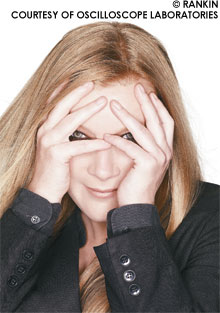
People in love do crazy things, especially in Andrea Arnold's films. So adapting Emily Brontë's masterpiece of pathological love, Wuthering Heights, came naturally. And unfazed by other film versions of the book, she made the story her own.
>> READ MORE: Peter Keough's review of Wuthering Heights <<
For example, her Heathcliff — whose race is never stated in the book but who is described as "a dark-skinned gypsy in aspect" — is black. I asked her if she thought that's how Brontë saw him.
"From her descriptions, I don't think there is any way he can be white," Arnold said. "He's exotic. They are very white people living in Yorkshire, and he's from another world. So it was important for him to be dark-skinned."
Also non-traditional was her turning the manse of the title into a hovel without any privacy.
"In a lot of the films it's portrayed as a Gothic mansion," she conceded. "But I went to the house — which is now a ruin — where Emily was inspired to write the book. And I looked at a lot of houses in Yorkshire that were from that time. They are little intimate houses in the middle of the moors. The families in them were thrown together and everyone could hear and see everything everyone did."
These choices, plus her decision to go light on Brontë's rich language, make the book cinematic. "Somebody called this 'Romantic realism,' " she said. "I always go after the real, but I'm fascinated with transcending reality and finding a place beyond."